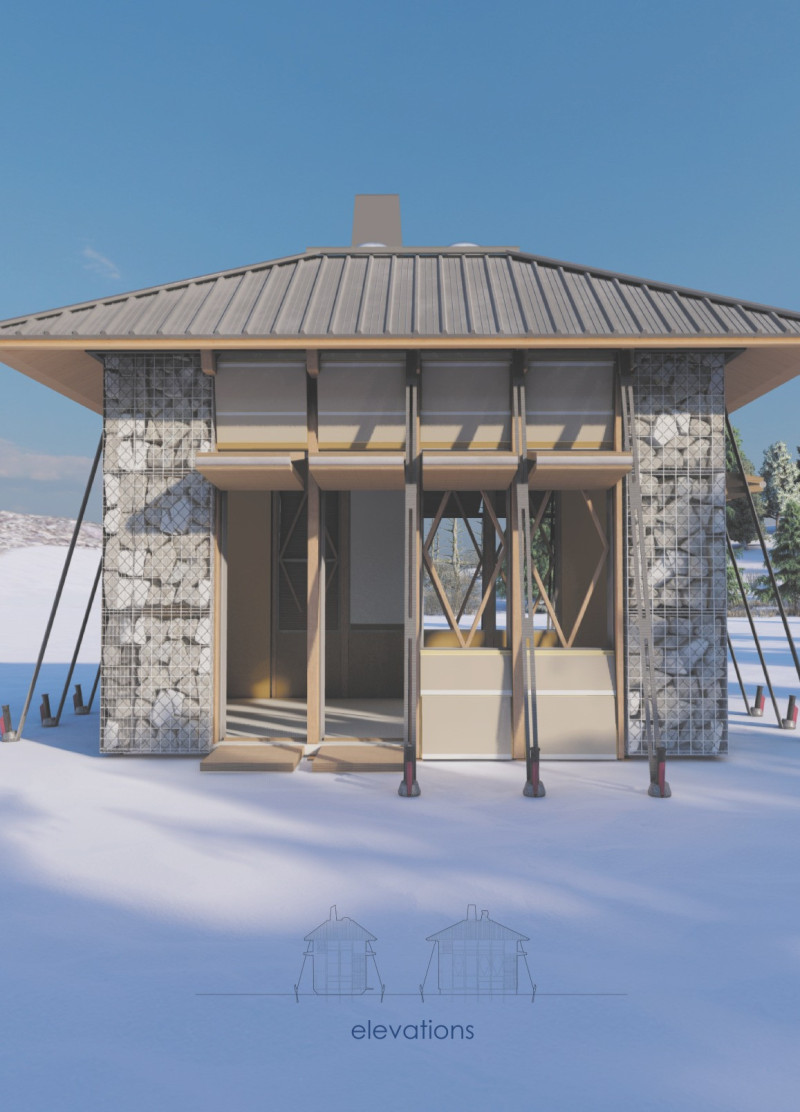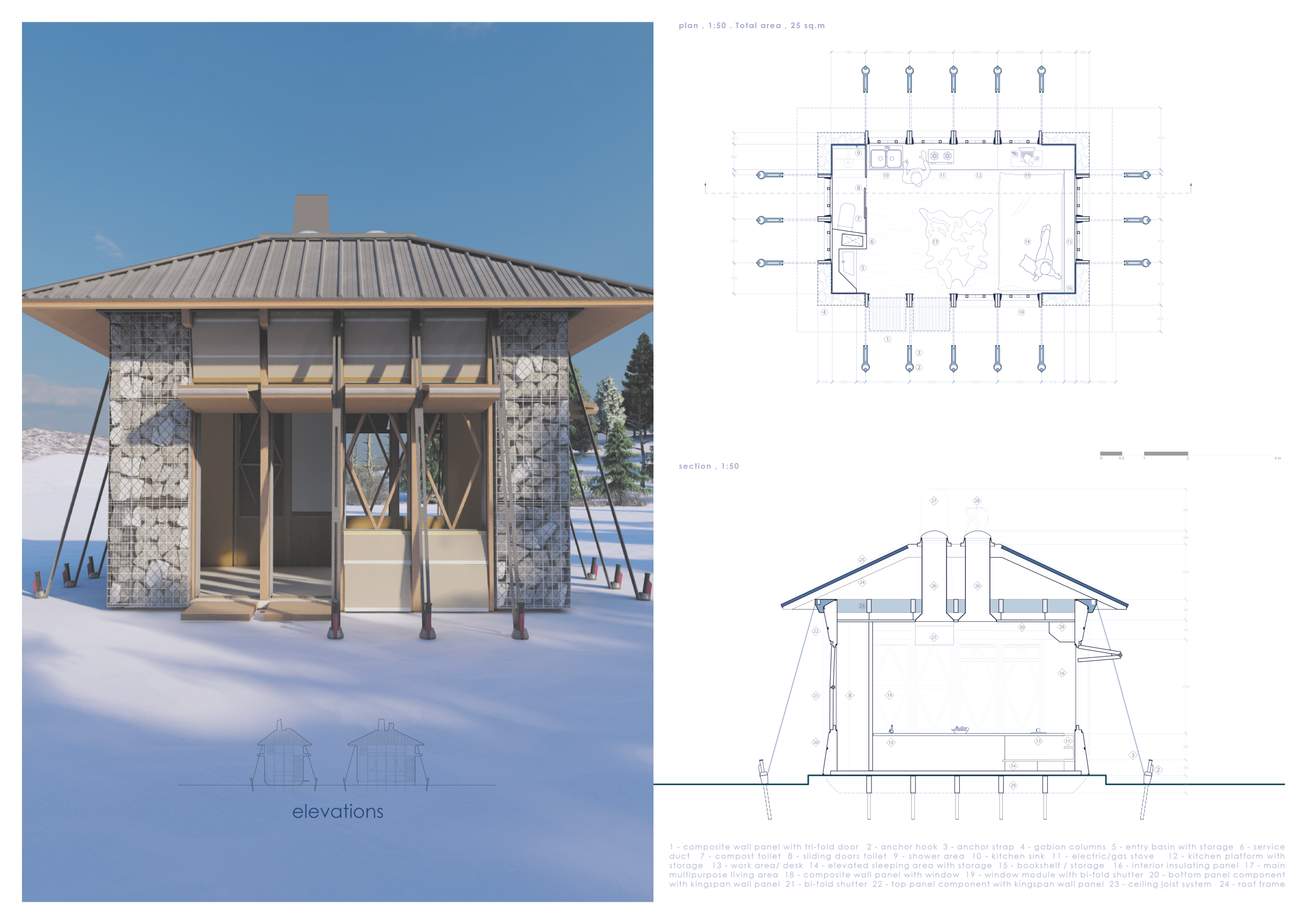5 key facts about this project
At its core, the design emphasizes harmony with nature, utilizing sustainable materials and methods that align with its ecological context. The architectural layout incorporates open spaces that foster interaction and connectivity among users, allowing for an engaging experience as one moves through the environment. The flow of the internal layout has been meticulously planned, with clearly defined areas that cater to both private and communal activities. This spatial organization not only enhances usability but also encourages a sense of belonging among occupants.
Significantly, the façade of the building is a purposeful statement in itself. A balanced interplay of materials such as concrete, wood, and glass creates a visually appealing exterior while ensuring structural integrity. The use of large windows not only maximizes natural light within but also blurs the lines between inside and outside, further connecting the occupants with their surroundings. Careful consideration has been given to the orientation of these windows, facilitating passive heating and cooling strategies, which reflect a modern understanding of energy efficiency in architectural design.
Furthermore, the project employs innovative design approaches that set it apart from traditional architectural norms. For example, the inclusion of green roofs and walls promotes biodiversity while enhancing the building's thermal performance. These elements are not merely decorative; they serve essential functional roles by reducing urban heat and improving air quality, which contributes to the overall ambition of sustainability embodied in the project.
The landscaping around the building has also been designed to encourage interaction with nature, incorporating native plant species that require minimal irrigation and maintenance. This thoughtful integration of green spaces not only enriches the visual landscape but also provides opportunities for outdoor activities, further enhancing the building's community focus.
Unique architectural features, such as [mention any noteworthy elements like cantilevered structures, an atrium, or interactive art installations], add depth to the project’s character. These elements invite curiosity and engagement, serving as focal points that draw people into the space. Their strategic placement demonstrates an understanding of how physical design can influence human behavior and community interaction.
Overall, this architectural project stands as a representation of modern design principles grounded in functionality and environmental awareness. It addresses the needs of its users while being considerate of its ecological footprint. Emphasizing collaboration between built form and nature, it creates a space that not only functions effectively but also enriches the lives of those who inhabit it.
For those interested in delving deeper into the architectural details, I encourage an exploration of the project presentation, which offers additional insights into the architectural plans, sections, and designs that underpin this thoughtful initiative. The architectural ideas represented here reveal the intention and creativity that drive this compelling project and provide a richer understanding of its significance within the context of contemporary architecture.


























